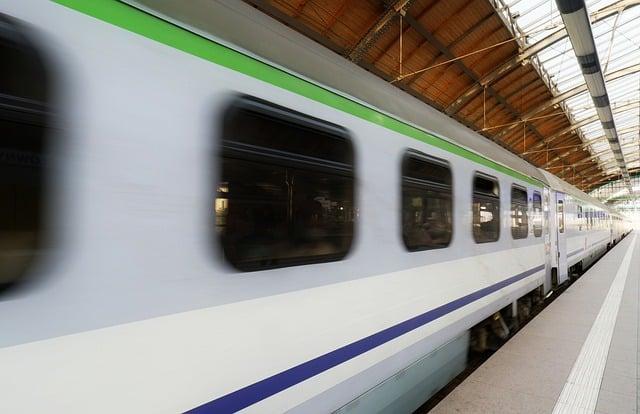Strengthening Pakistan’s Future: The Role of Infrastructure Development
As dawn breaks over the sprawling landscapes of Pakistan, the promise of a new day brings with it the potential for transformation. In a country resplendent with vibrant cultures, rich history, and abundant natural resources, the pathway to progress is often paved with the bricks of infrastructure. From the bustling streets of Karachi to the serene valleys of Gilgit-Baltistan, the state of infrastructure plays a pivotal role in shaping the socio-economic tapestry of the nation. It serves not only as a backbone for commerce and connectivity but also lays the groundwork for sustainable growth, community resilience, and the empowerment of its diverse population. This article delves into the intricate relationship between infrastructure development and Pakistan’s future, exploring how strategic investments can catalyze progress, enhance livelihoods, and fortify the country’s position on the global stage. Join us as we navigate through the challenges and opportunities that lie ahead in this critical endeavor, illuminating the pathways that could lead to a brighter, more prosperous tomorrow for all Pakistanis.
Revitalizing Urban Spaces: Enhancing City Infrastructure for Sustainable Growth
In the heart of every thriving city lies the essence of its infrastructure—an intricate web that connects communities, supports economies, and fosters sustainability. Revamping urban environments necessitates a holistic approach, combining modern engineering with innovative design to create spaces that are not only functional but also enriching. From the expansion of green transport systems to the integration of smart technologies, the potential for revitalization is limitless. Key components to focus on include:
- Green Spaces: Creating parks and recreational areas that promote biodiversity and improve the quality of urban life.
- Smart Transport: Implementing intelligent transportation systems that reduce congestion and enhance mobility.
- Energy Efficiency: Retrofitting buildings for energy conservation, from insulation to smart meters.
- Community Engagement: Involving local residents in planning to ensure developments reflect their needs and aspirations.
A successful transformation of urban landscapes requires significant investment in infrastructure that prioritizes sustainability and resilience. Strategic collaborations between government entities, private sectors, and community organizations can pave the way for innovative solutions that address critical challenges faced by cities today. The following table outlines pivotal infrastructure projects and their expected contributions:
| Project Name | Description | Expected Outcome |
|---|---|---|
| Urban Greenways | Development of cycling and walking paths through city parks. | Enhanced public health and reduced carbon emissions. |
| Smart Waste Management | Introduction of IoT sensors in waste bins for optimal collection. | Increased efficiency and reduced landfill overflow. |
| Renewable Energy Initiatives | Install solar panels on public buildings. | Lower energy costs and reliance on fossil fuels. |

Building Connectivity: The Importance of Transport Networks in Economic Development
Infrastructure serves as the backbone of any nation’s economy, playing a pivotal role in shaping its future. In Pakistan, enhancing transport networks not only facilitates the seamless movement of goods and people but also fosters deeper economic integration. As trade routes expand, local businesses gain access to broader markets, while consumers benefit from increased availability of products at competitive prices. The ripple effects of improved transport connectivity are profound, leading to job creation, higher investments, and ultimately, sustainable economic growth. Key factors contributing to this economic transformation include:
- Increased Accessibility: Better roads and railways open up remote regions, making them accessible for commerce.
- Reduced Transportation Costs: Efficient transport networks lower logistics costs, benefiting both businesses and consumers.
- Enhanced Trade Opportunities: Improved connectivity allows for easier import and export of goods, promoting international trade.
A robust transport system also encourages infrastructural investments, which in turn strengthens the overall economic landscape. Regions with reliable connectivity attract industries seeking efficient supply chains and workforce accessibility. Furthermore, the development of transport networks can stimulate tourism, showcasing Pakistan’s rich cultural heritage and natural beauty to the world. By addressing infrastructure gaps, the country can position itself as a competitive player in the global market. The potential economic benefits can be summarized in the table below:
| Benefit | Description |
|---|---|
| Job Creation | Infrastructure projects create numerous employment opportunities. |
| Investment Attraction | Improved transport networks draw both local and foreign investments. |
| Economic Diversification | Enhanced connectivity allows for the development of various industries. |

Empowering Rural Areas: Infrastructure Solutions for Equitable Progress
The trajectory towards sustainable development in rural areas hinges significantly on effective infrastructure solutions. Investing in transport networks, energy access, and telecommunications can catalyze economic activities, improve healthcare delivery, and enhance educational opportunities. Rural infrastructure not only facilitates market access for farmers and artisans but also encourages small business growth, empowering communities to aim for self-sufficiency and reduced dependency on urban centers. Consistent efforts in developing indigenous solutions can help in bridging the urban-rural divide and fostering equitable opportunities for all citizens.
Moreover, public-private partnerships can play a pivotal role in the transformation of rural infrastructure. By leveraging innovative funding mechanisms, local governments can enhance project sustainability and efficiency. A systematic approach should include the following key components:
- Community Engagement: Involving local stakeholders in decision-making to ensure the solutions meet real needs.
- Sustainable Practices: Integrating eco-friendly technologies to minimize environmental impacts.
- Capacity Building: Training local populations in management and maintenance of infrastructure projects.
In support of this vision, a focused allocation of resources towards rural infrastructure can yield profound long-term benefits. The table below illustrates the potential impact areas of enhanced infrastructure development:
| Impact Area | Projected Benefit |
|---|---|
| Education | Increased school enrollment and attendance rates. |
| Healthcare | Improved access to medical facilities and emergency services. |
| Economy | Boosted local economies through enhanced trade opportunities. |
| Environment | Enhanced sustainability through eco-friendly practices. |

Fostering Resilience: Integrating Sustainable Practices in Future Infrastructure Projects
As Pakistan embarks on a transformative journey towards sustainable infrastructure, embedding resilience into the development process is essential. By adopting innovative practices and materials that prioritize environmental harmony, we can create robust structures that withstand the test of time and natural calamities. Projects should not only focus on immediate economic benefits but also consider long-term impacts on communities and ecosystems. This approach encourages a paradigm shift where economic growth and ecological responsibility enhance each other, leading to a sustainable future.
Key strategies for integrating sustainable practices in infrastructure development include:
- Utilizing Local Resources: Implementing the use of indigenous materials minimizes carbon footprints and supports local economies.
- Green Building Techniques: Adopting energy-efficient designs and technologies reduces resource consumption and promotes a healthier environment.
- Community Engagement: Involving local populations ensures that projects meet actual needs and foster communal ownership.
- Adaptive Design: Structures should be crafted to adapt to evolving environmental conditions and community needs.
To further highlight the importance of sustainability in infrastructure, the following table outlines the potential benefits of implementing these practices:
| Benefit | Description |
|---|---|
| Cost Efficiency | Long-term savings through reduced operational and maintenance expenses. |
| Job Creation | New employment opportunities in green technology and construction sectors. |
| Environmental Protection | Preservation of natural habitats and reduction of pollution. |
| Community Resilience | Strengthening local capacity to withstand environmental shocks. |
Final Thoughts
As we stand at the crossroads of progress, it is clear that the future of Pakistan hinges on the spaces we build and the connections we foster. Infrastructure development is not merely about bricks and mortar; it is a transformative journey that empowers communities, drives economic growth, and enhances the quality of life for millions. By investing in sustainable projects that harmonize with both the environment and the needs of our populace, we can transform our nation into a beacon of resilience and innovation.
The challenges are great, but so are the opportunities. With a visionary approach, unwavering commitment, and collaborative spirit, we can pave the way for a robust infrastructure that stands the test of time. Every road laid, every bridge erected, and every facility constructed is a step toward a brighter, more connected Pakistan. As we look to the horizon, let us embrace the promise of infrastructure development, not just as a blueprint for growth, but as a foundation for unity, prosperity, and a shared future. Together, we can build a Pakistan that thrives, where the dreams of today ignite the possibilities of tomorrow.



